Ō 'AI PILI


4/Oct-Dec 2022
P
Kaupō Community Newsletter Volume I Issue










of Contents
Publisher: Kaupō Community Association, Inc.; Editor-in-Chief: Kamalama Mick; Copy Editors: Tama Starr, Georgia Pinsky; Editor’s Assistant: Kauwila Hanchett; Graphic Designers: Kauwila Hanchett & Kamalama Mick; Contributors: Kaupō Community Association, Inc. (KCAI), Tara Apo, Aldei Kawika Gregoire, Friends of St. Joseph Church, Carl "Soot" Bredhoff, Apo 'Ohana, Kau'i Kanakaole, Sheila Roback, Councilmember Shane Sinenci
Table
Kaupō: 'Āina o Ka Ua Pe'e Pā Pōhaku
Hanchett
A Hui Hou Aunty Barbara Apo
Cover Photo: Kauwila
The life-giving sea washes over one of the many limu-adorned islets of Mokulau creating mini waterfalls as summer comes to an
end.
Vice President's Letter
PŌ‘AI PILI SOLICITATION FOR CONTENT: If you have a story, letter, photograph, announcement, or article you’d like to see published in a future issue of Pō‘ai Pili, we’d love to hear from you! Content is due one month prior to our distribution date. For our next issue, please send submissions to poaipili@gmail.com no later than December 1, 2022. The views and opinions expressed in this newsletter are those of the authors and contributors of the various articles, and do not necessarily reflect the official policy or position of KCAI, or the opinions of KCAI’s individual board members. All content is meant to be positive and is not intended to malign any religion, ethnic group, club, organization, company, or individual. Community
East Maui Water Authority Lonoikamakahiki!
Old Camp
Calendar Editor's Note
St. Joseph Mission Church History
6 4 3 12 11 16 14 21 17 23 2 PŌ'AI PILI: Kaupō Community Newsletter
Huialoha Church History
Aloha Community,
This is the fourth issue of Pō’ai Pili and the culmination of an entire year of the Kaupō Community Newsletter. Thank you for coming with us on this journey! As we enter into Autumn, the season of Makahiki approaches. Beginning in November and ending in late January or early February, Makahiki is a season in which to spend time with your loved ones, celebrate and enjoy, and give thanks for blessings. It is a season to anchor yourself; to embrace love and gratitude.
This year’s Pō’ai Pili covers have had a particular theme that I’d like to share with you. The widely-fabled four elements are earth, air, fire, and water, and we’ve mirrored them on the covers. The first cover was a photo of the stone rectory, with the sunlight making a path on the brilliant green grass—this was “earth.” The second was a photo of blue sky above Kahikinui—this was “air.” The third was the glorious summer solstice sunrise over the cliffs of Kaupō—this was “fire.” This issue's cover is a picture of the ocean at Mokulau—this is “water.”
This issue is filled with wonderful articles, photos, announcements, and more—including an article about our powerful Kaupō rain, Ua Pe'e Pā Pōhaku . Enjoy, and thank you for your support!

Kamalama Mick
Editor’s
Kamalama Mick lives in Kaupō and is the editor of Pō‘ai Pili—the Kaupō Community Newsletter. She is the daughter of Kauwila Hanchett and Adam Kahualaulani Mick and the granddaughter of Mike and Carla Hanchett. In her spare time, she enjoys writing, art, and photography. Contact her at poaipili@gmail.com.
 Mahalo, Kamalama Mick Editor
Mahalo, Kamalama Mick Editor
Makahiki...is a season in which to spend time with your loved ones, celebrate and enjoy, and give thanks for blessings.
Note
‘‘ ‘‘ 3
Vice President's Message
This is our fourth quarterly issue of Pōʻai Pili for 2022, representing one year of our Kaupō community newsletter! Within these pages we have shared precious stories of place, history, news; updates from across our communities, and memories of loved ones. Weʻve been able to get to know our neighbors and learn from one another, and be inspired by the work happening across East Maui.

Pōʻai Pili fills a vital need for us and is a celebration of our communities, our kūpuna, our history, and our ʻāina.
Mahalo nui to all of the contributors who have shared with us this past year, to the volunteer staff of Pōʻai Pili, and to our newsletter editor, Kamalama, for creating such a beautiful medium through which we can stay connected and informed. It is through coming together that we can best mālama this place we all love—as well as one another.
We're also humbled and grateful for the many hands that have joined together to bring a long-held dream to fruition. In August 2022, KCAI received the Certificate of Occupancy for the Kaupō Community Resource Center!
There is much to celebrate and give thanks for as we move into this last quarter of 2022 and prepare for a new year.
Mahalo, Tara Apo
Tara Apo, Vice President Kaupō Community Association, Inc.
 Aloha Kaupō Community, Hoʻomaikaʻi!
Aloha Kaupō Community, Hoʻomaikaʻi!
It is through coming together that we can best mālama this place we all love—as well as one another. 4 PŌ'AI PILI: Kaupō Community Newsletter
‘‘ ‘‘


5

6 PŌ'AI PILI:
Kaupō Community Newsletter
‘Āina O Ka Ua Pe'e Pā Pōhaku
Land
Kaupō
By Aldei Kawika Gregoire
Ancient Hawaiians were fond of using nicknames for geographic areas. In East Maui, Hāna was called the land of the low-lying rain (ua lani haʻahaʻa) while neighboring Kīpahulu had the “love-snatching wind” (makani kāʻili aloha).
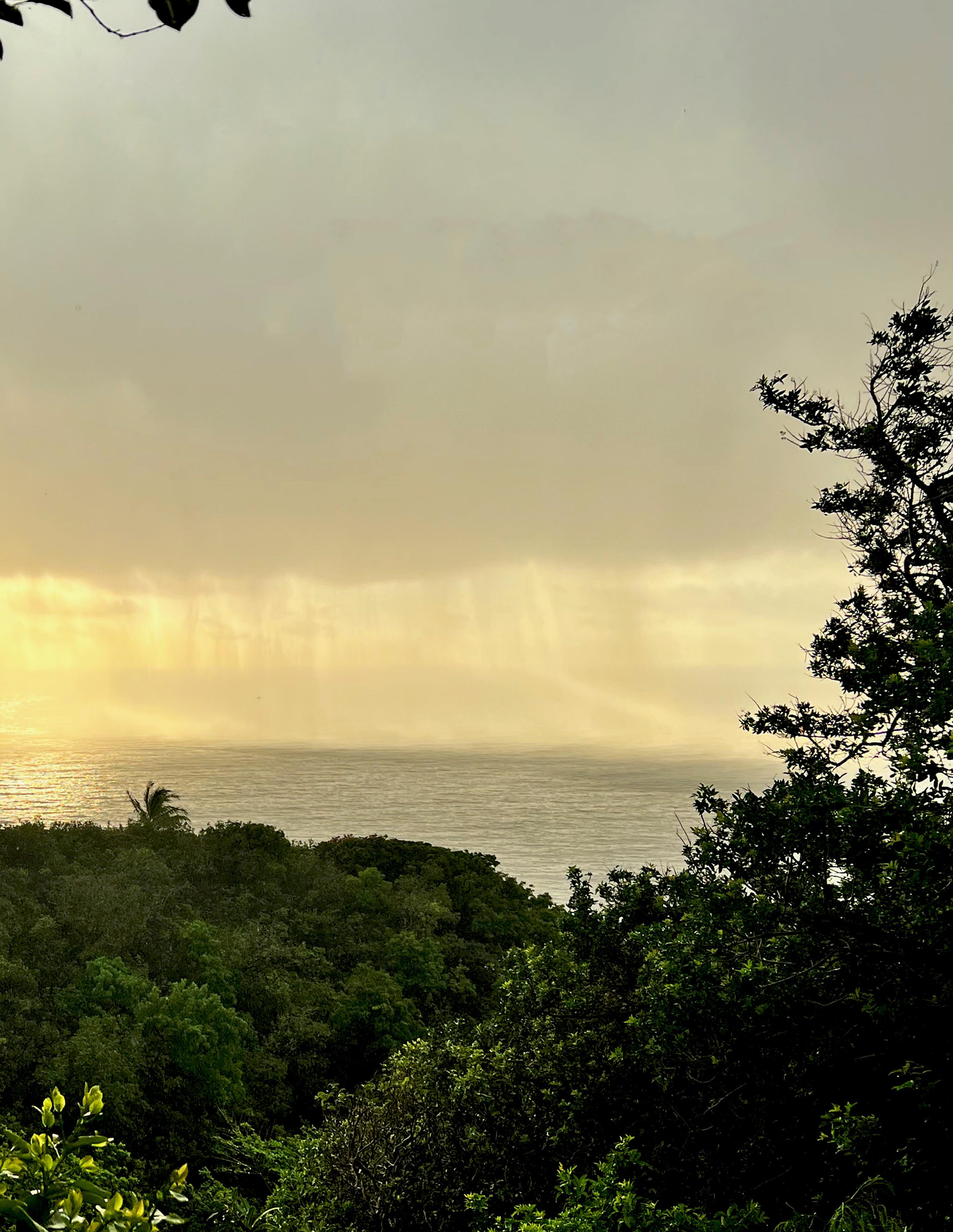
These nicknames can be considered epithets, a phrase that describes attributes of a place. In the historical record, a number of epithets appear for Kaupō, but one phrase in particular dominates: ua peʻe pā pōhaku, or rain that makes one hide behind rock walls.
This saying appears again and again in Hawaiian-language newspaper articles from the 1800s and early 1900s. In some periods, nearly every article about Kaupō used the term “ua peʻe pā pōhaku o Kaupō” to refer to the region with affection and longing. An examination of this epithet, then, helps those of us today to better understand the mindset of the Kaupō natives of old.
of the rain that makes one hide behind rock walls
7
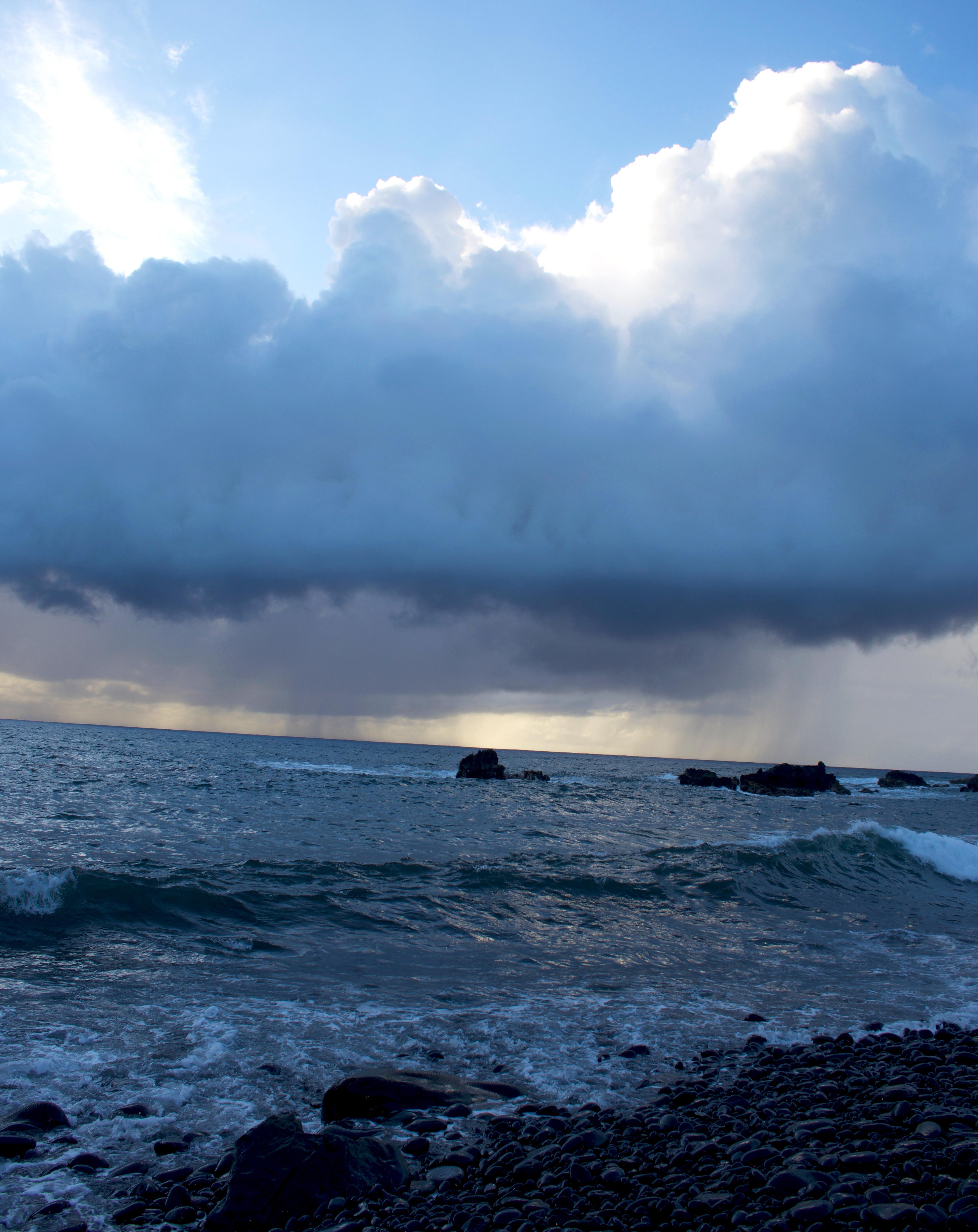 Editor's Note: In this photo, low lying clouds and columns of rain move across the sea. Rain squalls sweeping across the shoreline can be observed moving from Kīpahulu, soaking the land in intermittent bursts of windswept rain.
8 PŌ'AI PILI: Kaupō Community Newsletter
Editor's Note: In this photo, low lying clouds and columns of rain move across the sea. Rain squalls sweeping across the shoreline can be observed moving from Kīpahulu, soaking the land in intermittent bursts of windswept rain.
8 PŌ'AI PILI: Kaupō Community Newsletter
Weather Patterns of Kaupō
At the outset, it’s worth examining two weather patterns of Kaupō that explain this saying: rainfall and wind.
On Maui, Kaupō lies at the boundary of the rain shadow of Haleakalā mountain. In practice, this means that the eastern portion of Kaupō enjoys near-constant precipitation while western Kaupō is arid. The area of central Kaupō, between these two extremes, is where the last of the rains fall intermittently before being depleted.
If Kaupō is where rains go to die, the opposite is true of the wind. The wind blows vigorously and incessantly. The fact that crouching next to a rock wall provides enough shelter from the rain speaks to the strength of the wind.
Kaupō native L. Aalona Kanae described this wind phenomenon in Ka Nupepa Kuokoa in August 1906, referring to a common saying about the wind in East Maui:
He ola mau no ka hana mau o ka makani kamaaina i keia mau la e pa ana i ke ao ame ka po. O kela no ka makani i oleloia ai penei:
Hanau i Hana nui i Kipahulu, Kanakamakua i Kaupo. Elemakule i Kahikinui a make aku i Honuaula.
The typical wind has been lively in recent days, blowing all day and night. This is the wind of which is said the following:
Born in Hana, develops in Kipahulu, reaches maturity in Kaupo, grows old in Kahikinui and dies in Honuaula.
Thus, Haleakalā’s rain shadow and Kaupō’s strong winds create conditions where rains come and go with no warning. Moreover, the rain can strike even when there are no clouds seen, since the wind can carry the rain from clouds miles away.
A Note on the Translation

The commonly accepted translation of ua peʻe pā pōhaku is “rain that makes one hide behind rock walls.” However, the human element is implied; a direct translation of the four words in the saying is “rain, hide, wall, rock.”
Because of this, some might consider that the translation should be “rain that hides behind rock walls,” making the rain the actor rather than humans, also keeping in mind that Hawaiians routinely anthropomorphized weather. Nevertheless, there are a number of historical writings that support the accepted translation with the implied human actors.
First is a letter from Charles Kaopua of North Kona, Hawaii Island, published in Ka Nupepa Kuokoa in February 1920. Kaopua writes to provide an (incorrect) answer to a riddle, guessing “ua pee papohaku.” He describes the Kaupō epithet in a portion of his letter:
Ina oe e ike ana i ka ua, e pee ana oe o pulu i ka ua. Ua lohe au i ka moolelo o Kaupo ina ka e hele mai ana ka ua, pili aku la ka ma ka aoao o ka papohaku, aole ka e pulu ana.
O Kohala ka’u wahi kamaaina. Ina hele mai ka ua ma ka Akau mai, pili aku oe ma ka aoao hema; oia mau no ahiki i keia la a’u e kakau nei.
If you see the rain coming, you hide so that you don’t get wet. I have heard the story of Kaupo, that you will not get wet if you shelter on the side of a rock wall when the rain comes.
My homeland is Kohala. If the rain comes from the north, you huddle on the south side. It has always been this way even to this day that I am writing.
Two years later, in 1922, Bishop Museum researcher Thomas Maunupau visited Kaupō to collect cultural information, including the names of winds and rains. Here is what Maunupau wrote about ua peʻe pā pōhaku in the June 15, 1922, issue of Ka Nupepa Kuokoa:
Ua Peepapohaku—he ua hoonaukiuki, ano like me ka
Ua Haleuole i ka iliki iho a mao ae no a holo aku la ka poe a pee i ka pa pohaku, a o ia ke kumu i kapaia ai keia inoa. O ka inoa o keia ua he inoa no kamalii paha i kapa no ka wa e paani ai lakou iloko o ka ua, oia ka manao o ka meakakau aole na kahiko.
Rain That Makes One Hide Behind Rock Walls—an annoying rain similar to the Haleuole rain in that it falls suddenly and then clears up such that people must run and hide behind rock walls. That is the reason for this name. The name may have originated with children when they were playing in the rain. The writer does not believe this name came from the ancients.
9
Usage in Historical Articles

As seen above, Maunupau believed that the epithet ua peʻe pā pōhaku was a childish creation recent to the time he wrote his account in the 1920s. But a review of newspaper records indicates that the saying was in common use by the mid-1800s and carried serious and affectionate connotations.
The first known reference to ua peʻe pā pōhaku in newspapers appeared in Ka Nupepa Kuokoa on November 24, 1866, in an elegy by Hakaleleponi Paulo for her father, Paulo Ku:
E uwe ana au i kuu makuakane, Ia Paulo kanaka i ka wekiu, Pua makani kolokolonahe o ke kula. Kuu makuakane mai ka ua pee pa pohaku o Kaupo.
I cry for my father, Paulo, a pinnacle of a man, A wind rustling gently in the fields. My father from the Kaupo rain that makes one hide behind rocks.
Hakaleleponi wrote that her father was born when Kamehameha I sailed his canoe fleet to Oʻahu, in other words, just a few decades after Captain Cook’s arrival in the late 1700s. The use of ua peʻe pā pōhaku when referring to her father, then, suggests that the epithet may have originated around or even before Western contact.
A second example of ua peʻe pā pōhaku comes from January 1887 in Ka Nupepa Kuokoa. J. J. Kawahena, a patient at the Kalawao leper colony on Molokai wrote about recent happenings in the colony. Kawahena opened the letter with a wistful reference to Kaupō:
E ke KUOKOA e, Aloha Oe:—He wahi mea hou ka kou kiu kaulana e hooheno aku nei ma kou mau itamu i ike mai ai hoi na makamaka o kuu aina a one hanau hoi o ka ua pee-papohaku o Kaupo, Maui. Aloha wale ia home e.
Dear KUOKOA, greetings:—Here is some news from your esteemed informant to adorn your pages and inform readers in my homeland of Kaupo, Maui, where the rain makes one hide behind rock walls. What longing for that home.
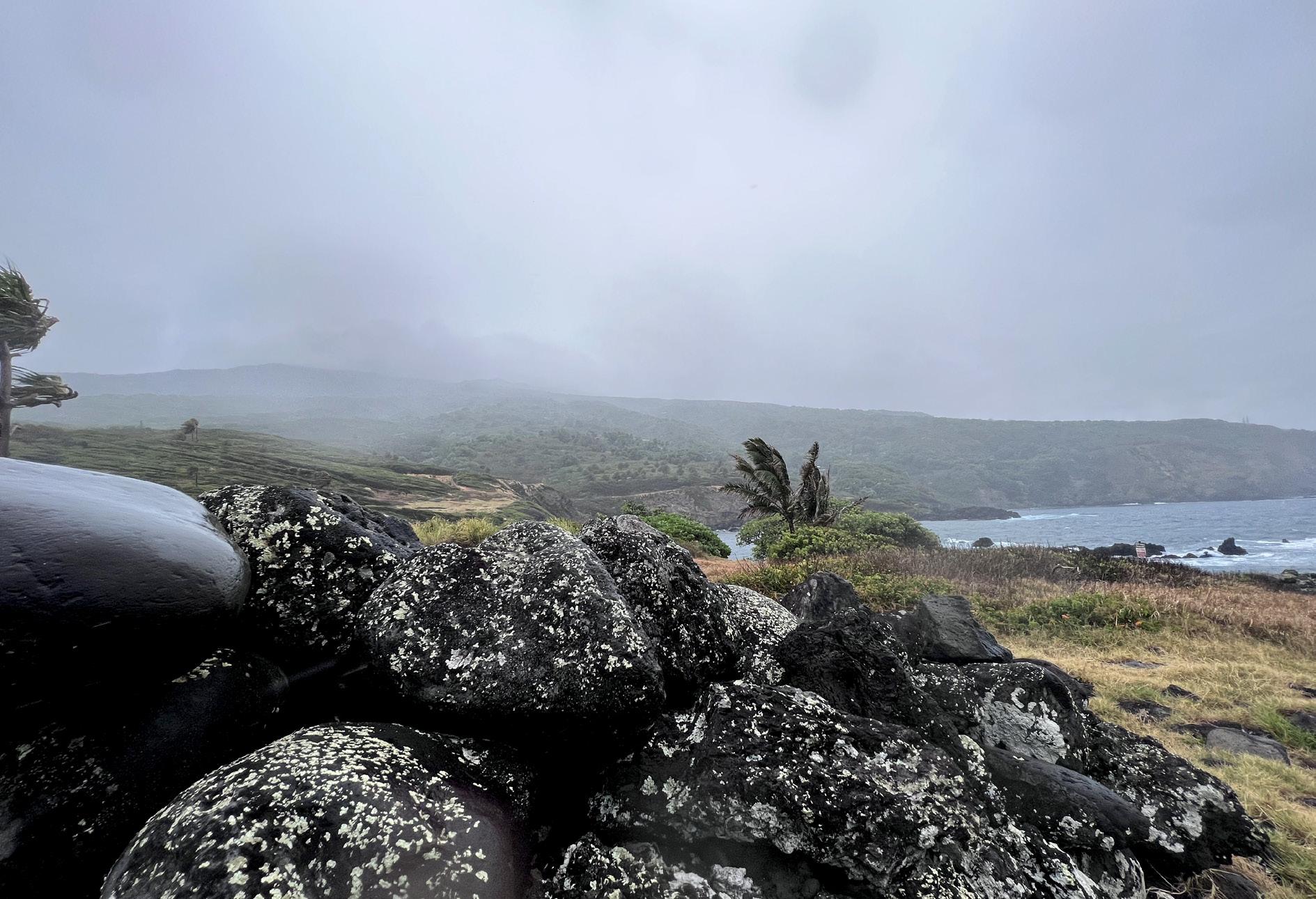
10 PŌ'AI
Community Newsletter
PILI: Kaupō
Next is an article from October 1913 in Ka Nupepa Kuokoa about a convention of regional Sunday schools at Mokulau:
Ua hoomaka na hana ma ka weheia ana o ka ahamele ma ka luakini ma ke ahiahi Poaono, Oct. 11. He nui na puali himeni like ole i akoakoa ae, a ua himeniia mai na himeni uʻi e na puali himeni mai o ka “Ua Lani Haahaa,” “Ka Makani Kaili Aloha,” ame “Ka Ua Peepapohaku o Kaupo.”
The activities began with a concert at the church on the evening of Saturday, Oct. 11. Many hymn groups gathered, and beautiful hymns were sung by the hymn groups of the “Rain That Lies Low in the Heavens,” the “Love-snatching Wind” and the “Kaupo Rain That Makes One Hide Behind Rock Walls.”
In the example above, the hymn groups of Hāna and Kīpahulu are referred to solely by the epithets “Rain that Lies Low in the Heavens” and the “Love-snatching Wind.” This occurred for Kaupō’s nickname as well, as in a 1879 headline in Ka Nupepa Kuokoa, “Na Mea Hou o Ka Ua Peepapohaku.”

Evidently, the Honolulu-based Kuokoa trusted that its readers across the Hawaiian Islands would know that ua peʻe pā pōhaku meant Kaupō and that the name of the area did not need to be included in the headline. This would be similar to the modern Honolulu Star-Advertiser using the headline “News from the Valley Isle” to refer to Maui.
Variations in the Saying

Throughout dozens of historical articles with the phrase ua peʻe pā pōhaku, there are a number of variations in spacing and capitalization (ua Pee Papohaku, ua peepapohaku, Uapeepapohaku, etc.). These variations give the saying additional importance as a compound word (via removed spacing) and as a proper noun (via capitalization). In addition there are multiple variations that alter the wording itself. The three most common such variations are ua pili pā pōhaku, ua peʻepeʻe pā pōhaku, and ua peʻe pōhaku.
The variation ua pili pā pōhaku replaces hide (peʻe) with cling (pili), so “rain that makes one cling to rock walls.” This variation may well be an earlier version of the standard ua peʻe pā pōhaku. The first reference to ua pili pā pōhaku
11
appeared in 1862, nearly 5 years before the first reference to ua peʻe pā pōhaku, in the obituary for Paulo Ku. This first known written use of ua pili pā pōhaku occurred in the January 25, 1862, edition of Ka Nupepa Kuokoa, in an elegy for a woman named Pililua, written by her child H. H. K. Kahoouluwaa of Lole, Kaupō.
Kuu makuahine o ka makani Moae—e, Mai ka ua pili pa pohaku hoi o ka aina—la
My mother of the Moae wind, From the rain of this land that makes one cling to rock walls

Separately, Moses Manu, an esteemed historian from East Maui, refers to ua pili pā pōhaku in an article in Ko Hawaii Pae Aina in November 1888, placing the saying in context among other well-known epithets for East Maui.

The second variation, ua peʻepeʻe pā pōhaku, repeats the word peʻe (hide). The repetition, or reduplication, of a word in Hawaiian typically adds a sense of frequency. This variation, then, might be translated as “rain that makes one constantly hide behind rock walls.”
S. K. Kamakahiki, writing about a trip to East Maui, used this variation in the February 14, 1891, issue of Ko Hawaii Pae Aina:
Ianuari 26, no ka makani Kailialoha o Kipahulu ma ka home noho o Rev. J K Iosepa no ekolu la. Ianuari 27 ua holo loa aku no ka ua Peepeepapohaku o Kaupo.
January 26, on to Kipahulu, land of the love-snatching wind, and the home of the Rev. J. K. Iosepa for three days. January 27, all the way to Kaupo, where the rain is forever making one hide behind rock walls.
The last variation discussed here, ua peʻe pōhaku, removes the word pā (walls) from the saying, so “rain that makes one hide behind rocks.” Ua peʻe pōhaku may be the best-known variation in some circles since this is the phrase Hawaiian scholar Mary Kawena Pukui included in ʻŌlelo Noʻeau, a book of Hawaiian poetical sayings. Additionally, this variation is displayed on a sign marking the border between Kīpahulu and Kaupō. Still, the term is much rarer than ua peʻe pā pōhaku and appears to be more recent (the first known reference being 1891).
Parting Thoughts
Taken as a whole, ua peʻe pā pōhaku appears to serve as a “pet name” for Kaupō, like an affectionate term for a grandmother. This is contrary to the suggestion from Maunupau, the Bishop Museum researcher, that it is a playful, childish saying.
Nowhere is this affection more clear than when Kaupō is addressed directly, as if a person, in historical obituaries. Mr. and Mrs. Kukahikoʻs farewell to their son Henry in Ka Nupepa Kuokoa in December 1922 embodies this:
E ka ua Peepapohaku o Kaupo e, aole oe e hoopulu hou ana ma kona mau papalina, ua pau ua nalo. Lihaliha wale!
Kaupo rain that makes one hide behind rock walls, you will no longer wet his cheeks. He is gone, he is lost. What heartache!
Aldei Kawika Gregoire is the grandson of Sam and Pauline Gregoire of Kaupō, Maui. Throughout his childhood he spent weekends in Kaupō developing a deep connection to place. He has combined his passion for Kaupō’s physical landscape and its associated stories with his interest in photojournalism.
His website—www.kaupomaui.com—showcases an invaluable collection of Kaupō’s stories, photographs, place names, culture, and history. Please note that diacritical markings (‘okina and kahakō) have been omitted in certain places to remain consistent with original sources.

12 PŌ'AI PILI: Kaupō Community Newsletter
Serving the Faithful Catholic of Kaupō St. Joseph Catholic Church
Contributed By: Friends of St. Joseph Church
St. Joseph Catholic Church at Kaupō, Maui, Hawai’i was established in 1862 by the missionary Catholic priests who evangelized on Maui beginning in the mid 1800s. It was Bishop Louis Maigret who blessed the Church on June 29, 1862.
St. Joseph Church served a thriving community of ranchers, fishermen, farmers, etc. for nearly 100 years, providing the spiritual needs of the Catholic faithful in Kaupo. They attended masses, religious education classes, sang in the Hawaiian language choirs, became members of the Holy Name Society, celebrated the Sacraments (Baptism, Penance, First Holy Communion, Confirmation, Marriage), attended funerals, etc.
The historically significant construction method of the period was such that it necessitated dedicated residents to dive in the ocean and bring up coral to melt into cement in order to build the church. This type of cement is part of what today still holds together the original stones used to construct the Church.
The Church was repaired by Fr. Cyril Early, SS.CC. in 1938 and re-blessed by Bishop Stephen Alencastre in May of that year. Unfortunately the population in Kaupō dwindled to only a few families, and the Church closed and fell into disrepair in the 1970s. During the late 1980s and very early in 1990s, much work was done to restore the Church, culminating in the rededication on July 6, 1991.


St. Joseph is a Mission of St. Mary’s Church in Hāna, Maui and continues to serve the faithful in the community. Mass is celebrated at 12:00noon whenever there is a 5th Sunday of the month, followed by fellowship and pot-luck lunch. The Church is also used for special occasions, such as the visitation of the relic of St. Damien in 2009. The church cemetery is the resting place for many of the
faithfully departed of Kaupō. These grave sites are maintained by loved ones.
St. Joseph is located on a promontory high above the sea with a spectacular view of Hawaii’s Big Island on a clear day. Visitors are welcome to stroll the grounds where, in addition to the Church building, the walls of the former stone-construction Rectory remain, as well as that of a cistern used many years ago. A turnstile at the roadside property entrance allows access by visitors and the local community at all times.
Caretakers maintain both the interior of the Church and the exterior property. Many varieties of plumeria, hibiscus, bougainvillea, bird of paradise, ti leaf plants, golden shower trees, and other varieties of trees and shrubbery make up the landscape of the scenic Church grounds and cemetery.
For more information visit https://friendsofstjoseph-kaupo.org.
13

14
PŌ'AI PILI: Kaupō Community Newsletter
Gathering with Aloha Since 1857
Contributed By: Carl "Soot" Bredhoff
t Kaupō the brethren have been preparing stone for a new church: Though no money has yet been expended.” Rev. W. O. Baldwin, 1857

For 165 years Huialoha Congregational Church has stood on the windswept promontory known as Mokulau at Kaupō, Maui.
The Hawaiian people of Kaupō undertook the tremendous task of building Huialoha Church by hand. They harvested coral from the ocean floor to be made into a mortar, hauled rocks to the site, and put the two together to erect the walls. Lumber was transported in for the ceiling and floor. The church was completed in 1859.
Records show that as of 1846 there was already a Congregational congregation in Kaupō, with the Rev. Eliphet W. Whittlesey serving Hana and Kaupō. By 1849 there were 231 worshipers.
Some of the Congregational ministers in the 1800’s and early 1900’s were Kealoha, Puhi, Inaina, and Murray. In more recent years, names such as Poepoe, Lake, Kalili, Plunkett, Crisp, Kaina, and Merseberg show up. The Rev. Bill Kaina served Huialoha and was present at both re-dedication services in 1978 and 2015 following the two restoration projects.
The Rev. Herbert Brewster served Huialoha in 1942 when the church’s mauka door was replaced by a window. During the 1950’s restoration, a bottle was found above the window with notes in it from some of the families who were working there; Keike, Apo, Brewster.
When Wananalua Congregational Church no longer had full time ministers, interim ministers served the area, accompanied by a few of the Wananalua Church lay ministers.


The Rev. Peter Konohia preached occasionally. His wife, Elizabeth, accompanied him and played the ukulele, which was the only music available unless the little foot pumped organ was brought down, in which case one of the interim ministers’ wives would play it.
Services were held once a month beginning at three in the afternoon. Alice Apo would bring flowers from her yard. Daisy Kekoanui would get up and sing a song for Huialoha. Judith Bredhoff brought cookies and juice.
A photo in one of Nick Soon’s picture albums shows a large wooden hall near where the chain gate is. There was also a small house for the ministers to stay in, located near where the restrooms are. Due to the house’s very poor condition, it was razed during the 1950’s restoration.
Over the past 165 years many people and organizations have volunteered to maintain the church and its grounds. There is much Aloha for Huialoha.
Presently there is a Huialoha Preservation ‘Ahahui whose mission is to preserve the church building and its grounds, which are owned by the Hawai’i Conference Foundation, United Church of Christ.
For more information please visit www.huialohachurchkaupo.org
A“ 15
Photo Credit: Kauwila Hanchett
Mālama Pono I Ka
Restoring Local Stewardship of Water Resources
The East Maui watershed is a critical part of our survival.
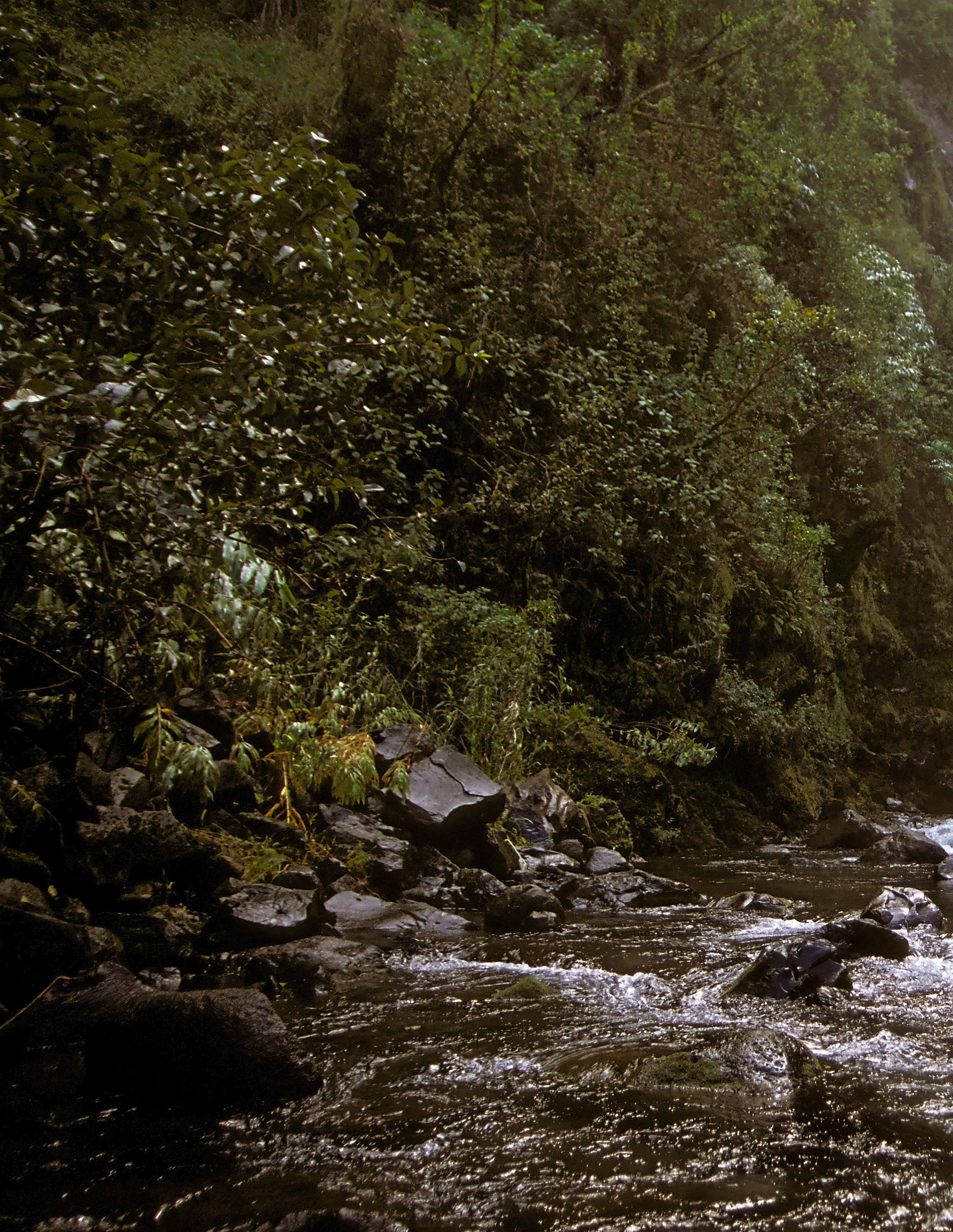
It provides billions of gallons of water for domestic use and for agriculture use to Maui County. The Watershed consists of 100,000 acres of Native Hawaiian forests and provides the critical habitat for more than 100 rare and endangered plant species.
The East Maui watershed has 400 miles of freshwater streams and is the largest supplier of water on the island. These areas are 'water banks,' which create and store water for future generations.
Last month, the County Council passed a resolution placing a question on this November’s ballot, to create community water authorities to obtain the East Maui leases and to manage the water coming from the East Maui watershed.
There are several old dilapidated legacy plantation systems like the East Maui Irrigation system, the Wailuku water system, the old Molokai Ranch system, and other systems managed by private companies whose primary mission is not being in the water business, such as the Hana Ranch system.
The ballot question mandates that a water authority be established
for East Maui and that it work with the state to obtain the licenses to divert water from four areas in East Maui, including Nahiku, Ke'anae, Honomanu, and Huelo.
The East Maui Community Water Authority will have a community board made up of people that live in the 4 watershed areas. These Board members will have control over what happens in the watersheds. They are tasked with approving and then overseeing a watershed plan designed to create a healthy ecosystem that can sustain our people for generations to come.
Board members are also responsible for creating the priorities for the authority, approving the programs, and hiring and overseeing the water authority’s director.
The Water Authority will negotiate with the State Board of Land and Natural Resources to inform them about the Authority's intent to manage the system without any interruption of service. The Authority will then begin the task of getting grants and engineering studies to fix the system so that it doesn’t waste any more water. This is a lot of responsibility, but with that responsibility comes control— community control.
We need the voters of Maui County to approve the ballot question. I encourage each one of you to learn about the water authority and to talk to your family, friends, co-workers, and

anyone else you know about the importance of voting yes. Please encourage them to talk to the people that they know too.
This is a monumental moment in history. For over 100 years, our water has been taken without our approval and managed for the sole good of private interests. It was one thing to have that private interest be a local company with local people. But now that local company has sold the land and is helping the new foreign owner to obtain the rights to our water.
We are at risk right now of a foreign company being given 30 or more years of control over these leases which allows it to take the water from our East Maui community. This foreign interest will manage the water system and take water in a manner that creates as much profit as possible, without any local input.
I introduced the legislation to create water authorities to stop this and to take back control of our most precious resource. In Hawaii, water is held in a Public Trust, in accordance with Article XI section 7 of the Hawaii State Constitution. As public officials we have priority over private interests in our water, to protect the Public Trust for generations to come. But I need your help. We need to be proactive and to get people to support it in the November election and to vote yes on creating community-run water authorities.
Mahalo nui loa,
Shane Sinenci
16 PŌ'AI PILI: Kaupō Community Newsletter
WA I
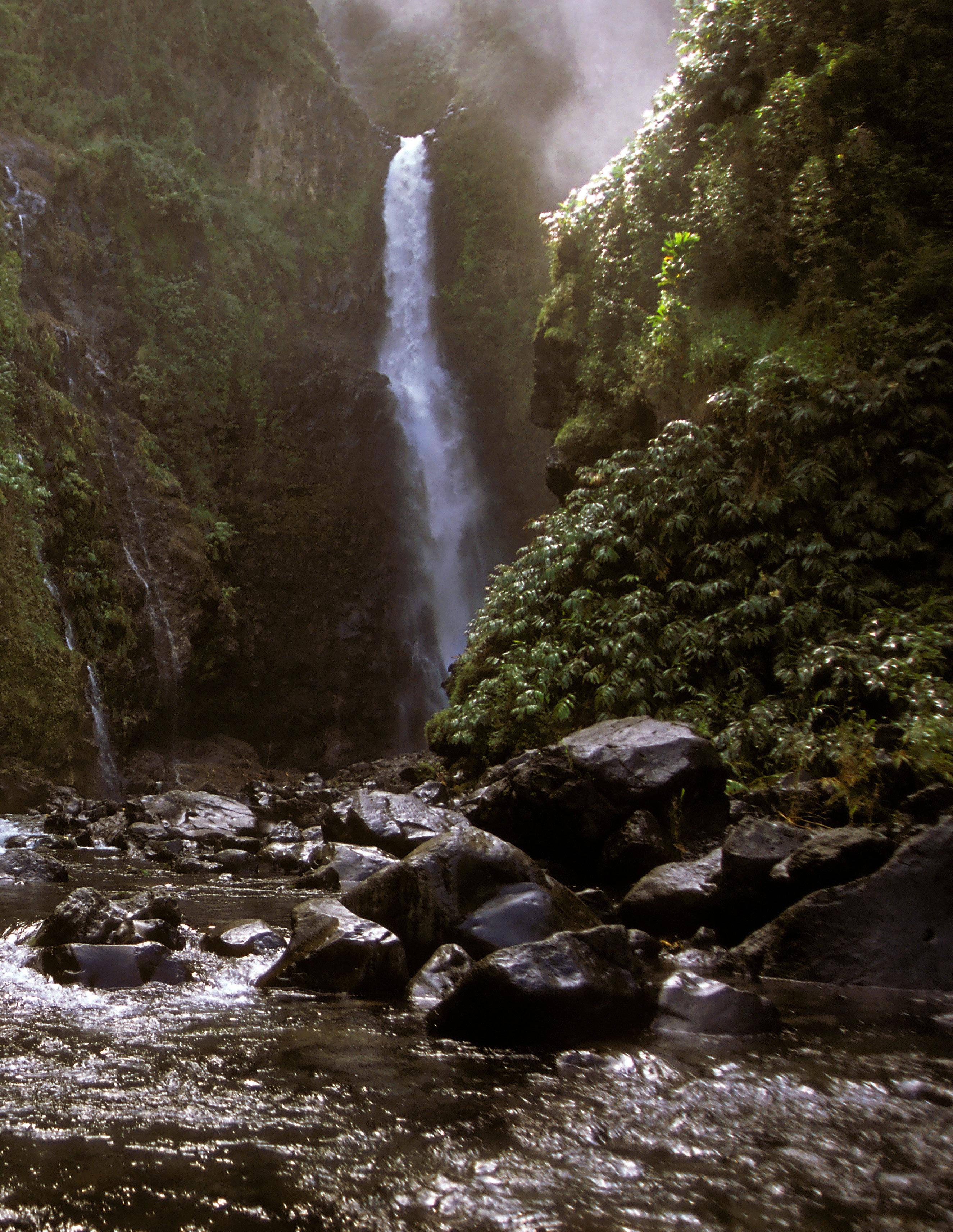

17
In Loving Memory
The subtle yet permeating fragrance of pakalana mingled with the oceanscented Moa'e winds that filled Hui Aloha Church as the 'ohana and friends of Barabara Apo gathered to celebrate her life on August 14, 2022.

Aunty Barbara, one of Kaupō's dearly treasured kupuna, will always be remembered for her kindness, wisdom, compassion, and aloha. She lived a life of humble service and had a special way of uplifting others and reaching people in the depth of despair— bringing peace, light, and love wherever she went.
A long-time resident of Kaupō who spent much time with the "old-timers," Aunty Barbara was a well of 'ike about Kaupō, mauka to makai. She enjoyed talking story and would often share stories and history about Kaupō's people and places.
She had a profound and lasting aloha for Kaupō that was reflected in her many years of support for the Kaupō Community Association as well as her loyal service as a board member for the Huialoha Preservation Ahahui.
Aunty Barbara first came to Kaupō in her teen years and quickly fell in love with this special place which would ever remain the home of her heart. She was married at Hui Aloha Church in 1964 to Kaupō resident Gilbert Kauhi Apo and together they raised their three children, Danson, Kaleo, and
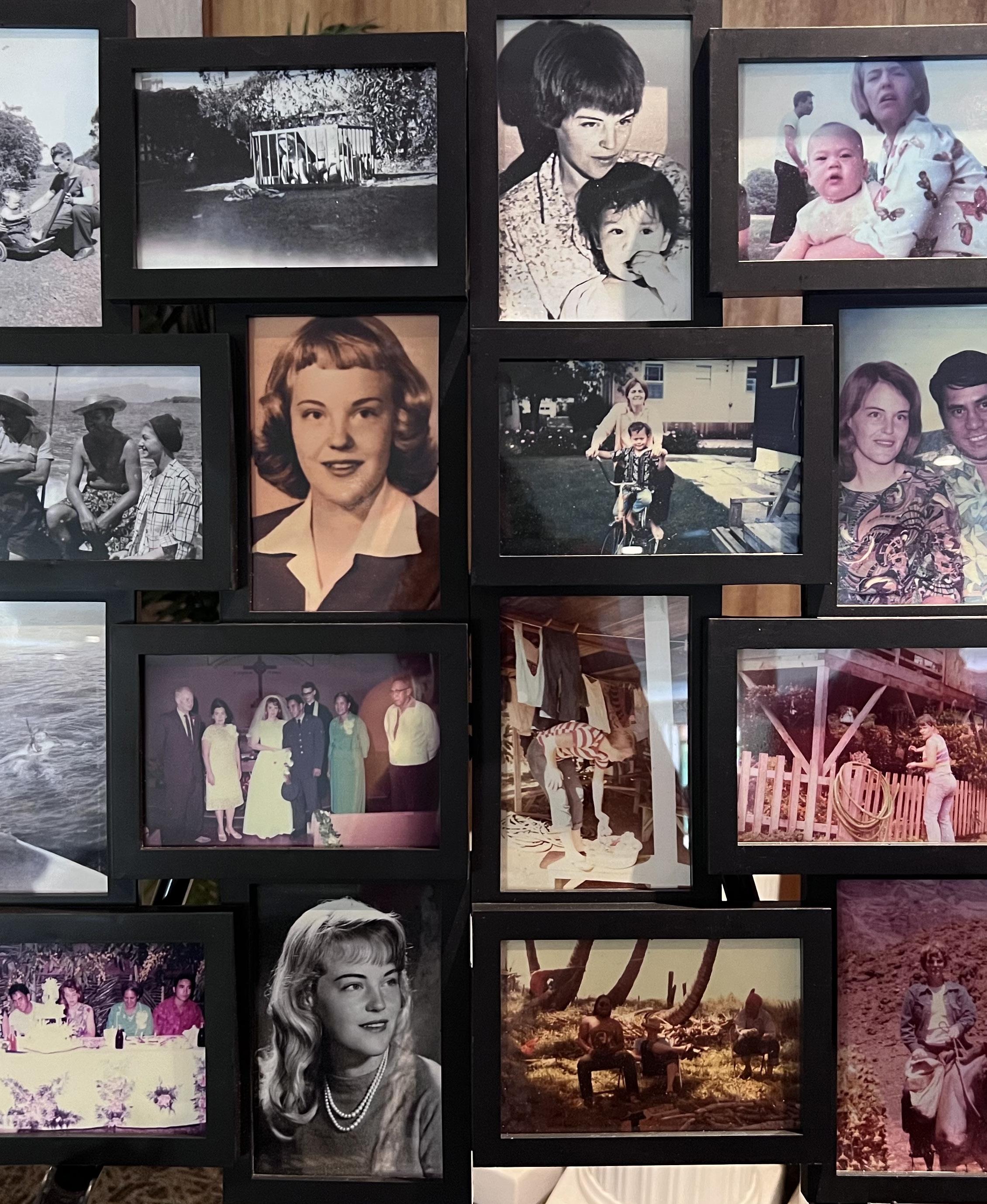
Kawehi; while nurturing countless other 'ohana members and hānai.
She was a loving and present grandmother to her three mo'opuna—Tara, Daniel, and Hiram—who will continue to carry on her legacy of aloha.
As the Kaupō Community continues to come together and navigate our future as a moku, we


will remember Aunty Barbara and the light of love she shared with us. We will seek the pathways of peace, kindness, care, and unity she illuminated.
Although we miss her more than words can say, her presence will linger forever in the Moa'e winds, the life-giving Ua Pe'e Pā Pōhaku rains, and in the gentle fragrance of a pakalana lei.
18 PŌ'AI PILI: Kaupō Community Newsletter
Ushering in the Makahiki Season with Reverence & Gratitude
 By Kau'i Kanakaole
By Kau'i Kanakaole
“Lonoikamakahiki” is an appropriate greeting of the Makahiki season both in the past and present. But what did it mean to our kūpuna of this land and what does it mean to us today?
19
HONOR & OBSERVE
Lonoikamakahiki was the name of the season that was marked by its powerful and dynamic atmospheric and oceanic movements. Kānaka used this time to honor the bounty of the year.
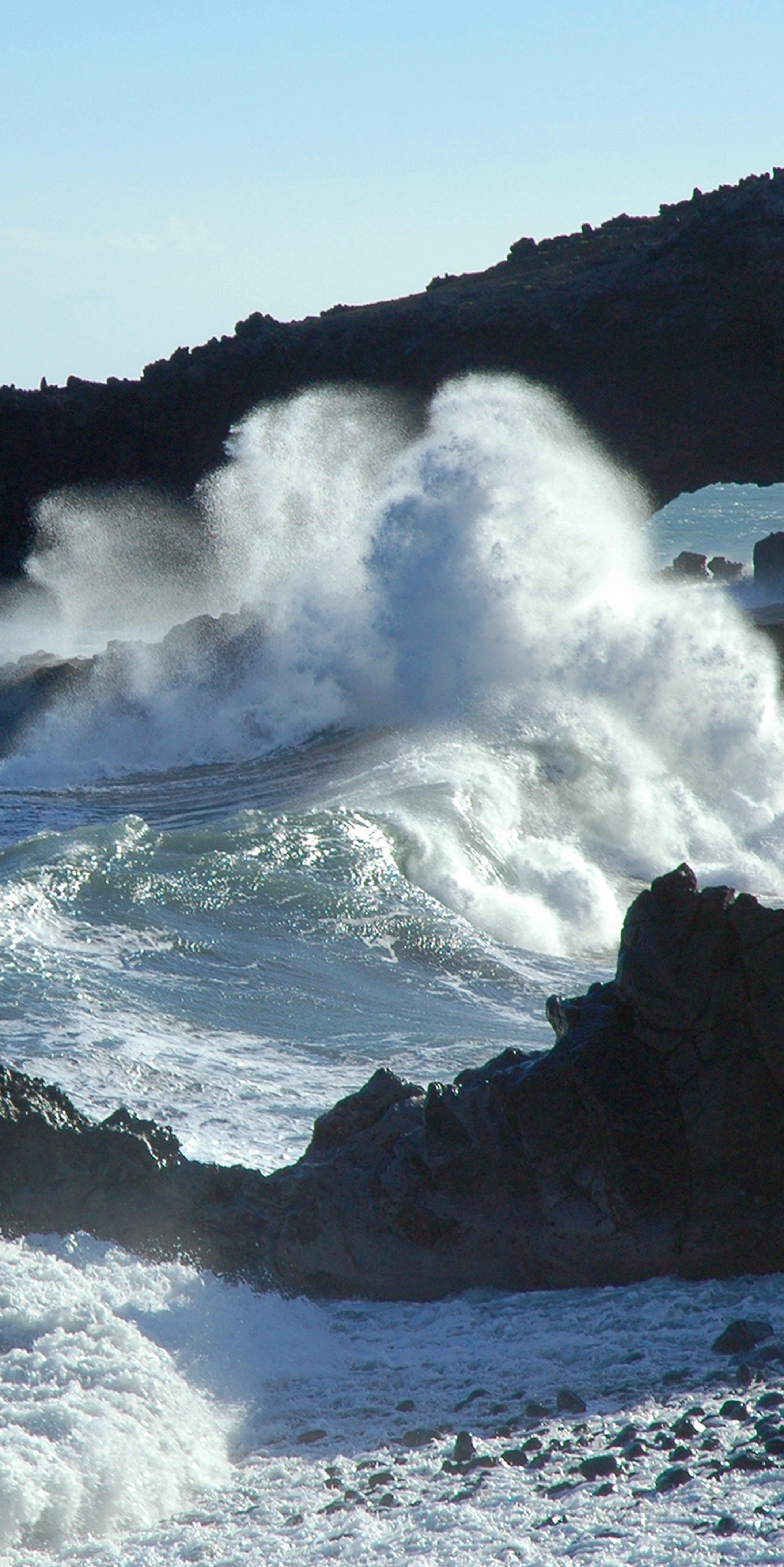
Lonoikamakahiki is the season in which the mountains are often dark and heavy; the rivers swollen and muddy. The ocean is frequently rough and choppy and the shoreline is sometimes a churn of debris from the flowing rivers and swift currents. The air temperature cools off seven or eight degrees, the nights are longer, and we spend more time inside at home with ʻohana.
CONNECT & ASPIRE
Lonoikamakahiki was the name of an impressive Aliʻi Nui of Hawai’i island, who was born of regal lineage: Līloa, ‘Umi, and Keawenuia‘umi.
Lonoikamakahiki is a time to look to each other and at the work we are all doing individually in our community, to come together to find commonalities and strengths, and to work towards shared goals.

20
THANKS
Lonoikamakahiki is the name of various wahi pana (sacred places) that informed the intellectual and spiritual needs of our people.
Lonoikamakahiki is the season where we return to the places that anchor us. We revisit, we feed, we give thanks for what we have been able to receive from these places. And we promise to honor and protect them.
For our kūpuna Lonoikamakahiki meant several things...
For us today, Lonoikamakahiki is a time to exercise extra care in our daily observations, pay attention to how we connect to our ʻāina and each other, reflect in gratitude for the past year, and commit to where we want to be.
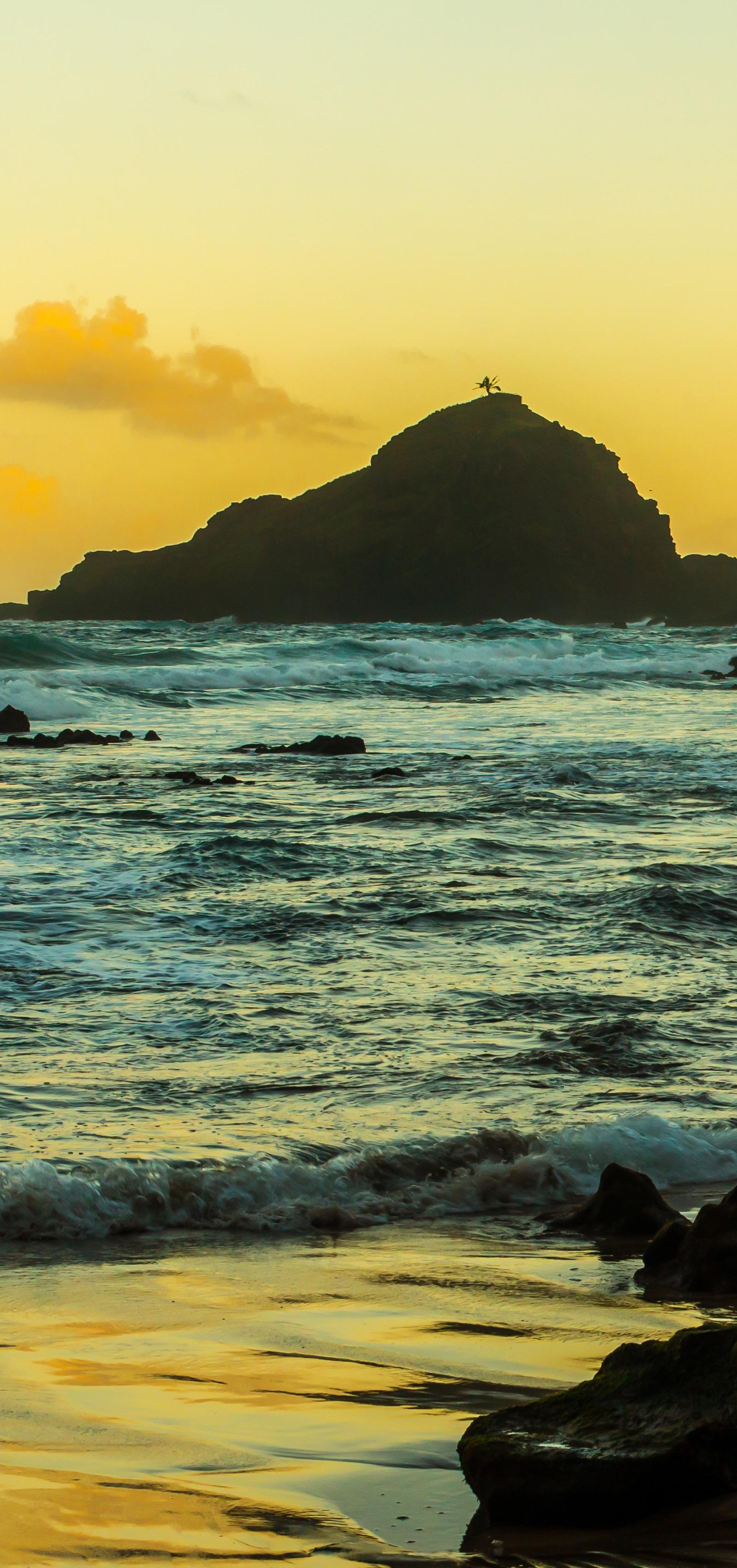
ʻŌkaʻi o Lono
E ala ē, ‘īnana hoʻi ē Nauane, nauane E ko Koʻolau ē Nauane, nauane ʻĀina o ka wai a Kāne Nauane, nauane
E ala ē, ‘īnana hoʻi ē Nauane, nauane
E ala ē, ‘īnana hoʻi ē Nauane, nauane E ko Hāna ē Nauane, nauane ʻĀina o ka Ua Lanihaʻahaʻa Nauane, nauane
E ala ē, ‘īnana hoʻi ē Nauane, nauane
E ala ē, ‘īnana hoʻi ē Nauane, nauane E ko Kīpahulu ē Nauane, nauane ʻĀina o ka makani Kāʻili Aloha Nauane, nauane
E ala ē, ‘īnana hoʻi ē Nauane, nauane
E ala ē, ‘īnana hoʻi ē Nauane, nauane E ko Kaupō ē Nauane, nauane ʻĀina o ka Ua Peʻe Pōhaku Nauane, nauane
E ala ē, ‘īnana hoʻi ē Nauane, nauane
Na Kauʻi Kanakaʻole 2018
REFLECT
& GIVE
21
On November 18th, 2022, Lonoikamakahiki will be celebrated on the grounds of Kahanu Gardens, with Hale o Piʻilani as a formidable backbone, Kanehoalani kau ma ka lolo, and the ao puaʻa piling up above Paki, Hilinaʻi and Olopawa. It will be a majestic day in Honomaʻele and perfect conditions for an ʻAha Makahiki in Maui Hikina.


It will start with the procession of Lonomakua that will come inland off Ke Ala Loa o Maui at the point of Kalāhu to hold space and accept hoʻokupu from all who feel the need to acknowledge all the intricacies of the lono.
Organizations, businesses, educational institutions, farmers,
fishermen and hula practitioners will chant their oli hoʻokupu, place their offering on the lele, sit in unity and acknowledgement when taking their ʻapu ʻawa, eat of the kinolau of Lono and play the traditional games. It will be celebratory of who we are today as kānaka of this particular ʻāina, while being firmly grounded in the intellect and observations of our kūpuna.
Join the ʻAha Makahiki o Maui Hikina on November 18th, 2022! Itʻs open to the community. Be part of the observation, connection, aspiration, reflection and gratitude that is Lonoikamakahiki! For more information on how to participate, contact Ala Kukui, contact@ alakukui.org, (808)248-7841.

22 PŌ'AI
PILI: Kaupō Community Newsletter
The Sweet Golden Days of My Youth Old Camp
By Sheila Mae Uluwehi Roback

remember the sweet golden days of my youth at Old Camp. The smell of coconut and sugar, frying in the pan of butter that Mama used to make. Nobody made coconut candy like Mama did. It melted in my mouth, sticky, sweet, and ohso-‘ono. I can see Mama’s foot on the pedal of her sewing machine— back and forth, back and forth as she whistled a sweet melody.
How I treasured my one-of-akind rice bag shorts with a shirt to match. She sewed for me a patchwork mu'umu'u with all the colors of the rainbow. Mama could look at you, take one of your old dresses, and make a brand-new dress that fit to a tee; she never had to measure, it was all done by eye. She was a master at sewing!
Upstairs, up house, Mama Mata’s and Papa Blas’s house. Peals of laughter ringing in the air, the smell of Pine-O coming from a freshly mopped floor, the feel of the cool lauhala mats under my feet, so many rooms to explore and to hide and play in. The sweet voice of Lena Machado wafts through the air…Mele ana e, mele ana ho’i….
The upstairs parlor was filled with wall-to-wall pune’e, beds, couches and chairs. I remember lying in bed in Aunty Angela’s room, looking up at the ceiling painted in bright fluorescent colors with tracks of furry menehune feet walking a trail up the walls. Aunty Angela, Ma'ano, Pearl, Lois, Donna and I, singing to the words written on the walls, “When you’re alone with nothing better to do you can always go downtown.”
IMama’s hands were rough and weathered—hard-working hands that picked and cleaned lauhala; no need for gloves. I loved to watch her strip lauhala as she softly whistled her special whistle as she worked. She was a master at lauhala weaving—hats, mats, fans, pillows, picture frames, and my favorite: stars!
On Easter, she always made lauhala baskets for each of us (and they always won the Easter basket contest). Mama held all the qualities of the ‘Ōlelo No'eau: “E wehe i ka umauma i ākea”…Open the chest wide and spacious. (Said of a generous person.)
Papa Blas was a man of few words but always teaching, always working, always making time to answer the many questions we bombarded him with. My first job was working for him—my pay started at one penny, then increased to a nickel, then a dime.
By the time I retired my pay was up to a quarter. Some of you might have had my job before or after me; it was pulling the white hairs from his head. I sometimes pulled a black hair, and he would know that one was not white, so no pay. He would count all the white hairs and then give me my coins. Then it was a mad dash to Hasegawa store to the glass case of candies; back then you could buy a lot of gum and candies with 50 cents.
He taught me how to cut down the tallest banana tree, without letting a single banana touch the ground. He knew exactly when to cut the bananas and when each bunch would start to ripen; he was a master farmer. He had a way of saying people’s name, with his Filipino accent that made your
name sound special. I can hear him now, saying, “Sila, I suppose you go help Papa feed the pigs.” We would gather papayas, cut them up into a giant pot, and cook the slop for the pigs. Anything and everything went into that pot. Making the fire was the fun part; lots of newspaper. We always smelled like smoke afterwards; it was the best mosquito repellent in those days. We were always dirty at the end of the day and it’s no wonder! There was never a boring moment in my childhood days at Old Camp.
Old Camp…some of my most cherished memories come from that place and that time. I spent my childhood there as Mama was our babysitter while my parents worked. My friends were Aunty Angela, Ma'ano, Donna, Susan, Sweetheart (Lily Marie) and Sweetheart (Sophronia). Sophronia and I spent many, many days swinging on the swing that was between the Diegos’ house and the Sinencis’ house. It hung from the giant plumeria trees and when we were swinging we used to pretend we could fly to heaven and pick plumeria in the clouds.
This area was beautiful, and it led down a path to Tutu Kahuila’s house and the sweetest mountain apple tree. I remember going to Tutu Kahuila’s house. He would be sitting on the porch patching net or playing his guitar. He would invite us in to drink hot tea and sometimes read from the biggest Bible I ever saw. The best part was sitting on his steps eating juicy mountain apples and listening to him play his guitar.
Some of our toys back then were yellow allamanda fingernails, hibiscus stem big eye makers, sardine and tuna can high heels
23
(when we tied string through, it became a walkie talkie or telephone), papaya stalk and ali'i poepoe seed shooting blow guns, and let’s not forget the mud pies we would make.
Sophronia and I had FilipinoHawaiian style tea parties; nothing like in England. We decorated our mud pies with flowers and leaves. Mama Pine was always the sweetest guest at our tea parties; she would pretend to try each dish and drink our special chocolate champaign and exclaim how ‘ono it was and what good chefs we were.
I loved to sit on Mama Pine’s and Papa Ash’s front porch; I was always welcomed with aloha. Sophronia used to tell me, “No scared my Papa, he no bite!” Laughter surrounded the house with all the aunties; we used to try on their high heels and play dress up. What fun days!
Our special treats back then were red coconut balls, almond roca, coconut and black beans am pan, coconut candy; and crackers, crackers, crackers. We had cracker with butter, peanut butter, guava jelly, pear and sugar, condensed milk; in coffee, cocoa or tea; with butter and sugar sprinkled on top. Hinae used to make stuffed akule, a pickled dish; it was stuffed with rice that had the taste of sweet vinegar. It was Stephen Boy’s favorite. I always wondered what the Japanese called this—sushi, maybe?
My Papa was the sabao (gravy) man; my favorite was tuna sabao. Papa always had a fruit for us to eat and Mama had apple turnovers, hot from the oven. My favorite treat that Mama made was bitsubitsu; now, every once in a while, my dad makes it, and it always reminds me of “Old Camp” days.
When I think of Old Camp, I remember the beauty of hearing Hawaiian, Filipino, Japanese, and even a form of Pig Latin called “gu” spoken—"yougu knowgo whagat Igi
megeen!” I remember the laughter, the tears, the music, the smells of life, sustenance, spirit, and passion.
I remember the love, legacies, and family.
Old Camp was a blend of culture, food, music, faith, and families.
I am so blessed to have been a child raised in Old Camp. I want to thank all the families who were an important part of my life back in Old Camp—the Diegos, Tolentinos, Fujikawas, Sumidas, Moihas, Kahuilas, Sinencis and the Filipino Tatas; Sabino, Sabrine and Bening.
Also to the families who lived there before my time: the Kus, Villiarimos and many more. I have come to appreciate more and more the values that I learned growing up in your presence; your teaching; your aloha.
The valuable lessons I learned that you all instilled in me are to love one another, to forgive one another, to malama one another, to help one another, and most important, to love the Lord God with all your heart, might, and soul.
To Old Camp, and the families that called this place home, we were hard workers—innovative, talented, intelligent; we were not poor, we were rich—so rich with the love of each other, so blessed with the love of our Father in Heaven.
May we always be grateful for the many blessings and mercies we receive each day and give thanks to God for the breath of life! May we never forget the Sweet Golden Days of Our Youth at Old Camp…
The valuable lessons I learned...are to love one another, to forgive one another, to mālama one another, to help one another, and most important, to love the Lord God with all your heart, might, and soul.

Martha and Blas Sinenci with their children in 1947 near Old Camp in Hāna. Photo courtesy of Sheila Roback. Used with permission from the Sinenci 'Ohana.

‘‘ 24 PŌ'AI PILI: Kaupō Community Newsletter
‘‘
HanaMaui.com
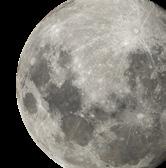
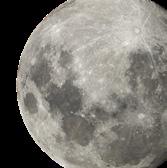

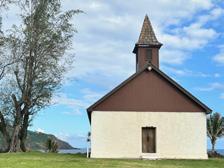












HanaMaui.com is your portal to Hāna and East Maui, featuring the Hāna Business Directory, Hāna Events Calendar, Road to Hāna information, and Safety and Alerts information.









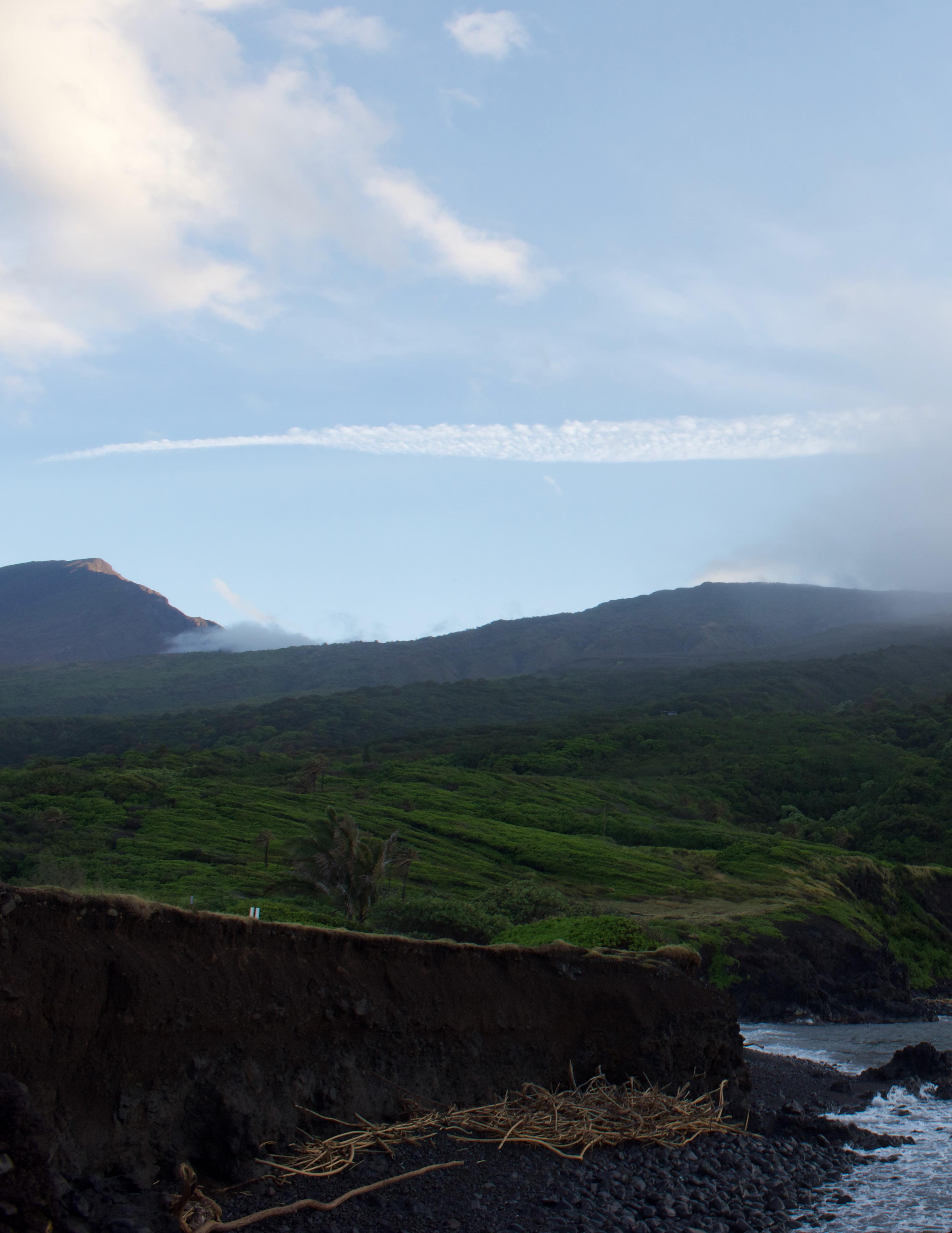
















































HanaMaui.com operates as a trade name managed by the Hāna Business Council, a federally recognized 501(c)(3) non-profit organization.
Hana Community Email Newsletter
To subscribe via email to Hāna Community News and get articles, notices and COVID-19 updates for East Maui delivered to your inbox, send an email to subscribe@hanacommunity. net.
Sunday Monday Tuesday Wednesday Thursday Friday Saturday 1 2 5 6 7 8 9 10 11 12 13 14 15 16 17 18 19 20 21 22 23 24 25 26 27 28 29 30 31 Sunday Monday Tuesday Wednesday Thursday Friday Saturday 3 4 5 6 7 8 9 10 11 12 13 14 15 16 17 18 19 20 21 22 23 24 25 26 27 28 29 31 Sunday Monday Tuesday Wednesday Thursday Friday Saturday 1 2 3 4 7 8 9 10 11 12 13 14 15 16 17 18 20 21 22 23 24 25 26 27 28 29 30 4 9-12 Church Service OCTOBER NOVEMBER 5 KCAI Work Day 9-12 Full Moon Full Moon Full Moon New Year's Eve KCAI Work Day 9-12 9-12 Church Service 3 2 1 DECEMBER 9-12 Church Service Mass @ 12 Noon 30 3-5pm 3-5pm OCT-DEC 2022 General Election KCAI Work Day 9-12 6 Community Mtg 10-12 19 Veteran's Day Thanksgiving Day Christmas Day Hana School Fall Intercession 3-5pm Hāna School Winter Intercession Hāna School Winter Intercession Hana Farmers Market Girls Volleyball @ Hana School 6-8pm Yoga Class @ Hana Tropicals 10-11am Hula & Hwn Cultural Class @ Hana Tropicals 4-5:30 pm Hula & Hwn Cultural Class @ Hana Tropicals 4-5:30 pm Ashtanga Vinyasa Yoga @ Hana Tropicals 9-10:30 am KOKO Kanikapili-Live Music Radio Yoga Class @ Hana Tropicals 10-11am Hula & Hwn Cultural Class @ Hana Tropicals 4-5:30 pm 3-5pm Ultimate Disk @ Hāna Ballpark 5-7pm Yoga Class @ Hana Tropicals 10-11am Hula & Hwn Cultural Class @ Hāna Tropicals 4-5:30 pm Hula & Hwn Cultural Class @ Hāna Tropicals 4-5:30 pm Ashtanga Vinyasa Yoga @ Hāna Tropicals 9-10:30 am 3-5pm Open Mic @ Koki 6-10pm Girl's Volleyball 10-12, Football 3-5pm Aloha Week Parade 11-1pm, Music 1-3pm @ Hāna Ballpark Fishing Contest @ Hana Bay 7am-12pm Lei Making Class @ Hotel 3-4:30pm Floral & Lei Contest 10am-2pm KaraokeConcert 5-9pm Ballpark Kūpuna Lunch @ Hotel 11-2pm Talent Show 4-9pm @ Hāna Bay Taro, Ulu, Pohole, & Poke Contest @ Hāna Bay 5-6pm Pō Hawai'i & Aloha Attire Contest 6-10pm Cross County Golf @ Hōlani Hāna 2-4pm Hō'ike Night @ Hāna Bay 5-10pm Ashtanga Vinyasa Yoga @ Hana Tropicals 9-10:30 am Hula & Hwn Class 4-5:30 pm Hula & Hwn @ Hana Tropicals, 4-5:30pm Yoga Class @ Hana Tropicals 10-11am Ashtanga Vinyasa Yoga @ Hana Tropicals 9-10:30 am Hula & Hwn Cultural Class @ Hana Tropicals 4-5:30 pm Hula & Hwn Cultural Class @ Hāna Tropicals 4-5:30 pm Hula & Hwn Cultural Class @ Hāna Tropicals 4-5:30 pm Ashtanga Vinyasa Yoga @ Hāna Tropicals 9-10:30 am Yoga Class @ Hāna Tropicals 10-11am Hula & Hwn Cultural Class @ Hāna Tropicals 4-5:30 pm Hula & Hwn Cultural Class @ Hāna Tropicals 4-5:30 pm Ashtanga Vinyasa Yoga @ Hāna Tropicals Yoga Class @ Hāna Tropicals 10-11am 3-5pm Ultimate Disk @ Hāna Ballpark 5-7pm Hula & Hwn Cultural Class @ Hāna Tropicals 4-5:30 pm Hula & Hwn Cultural Class @ Hāna Tropicals 4-5:30 pm Yoga Class @ Hāna Tropicals 10-11am Ashtanga Vinyasa Yoga @ Hāna Tropicals 3-5pm Open Mic @ Koki 6-10pm Yoga Class @ Hāna Tropicals 10-11am Yoga Class @ Hāna Tropicals 10-11am Yoga Class @ Hāna Tropicals 10-11am Yoga Class @ Hāna Tropicals 10-11am Hāna Metals Recycling Hula & Hwn Class 4-5:30 pm Hula & Hwn Cultural Class @ Hāna Tropicals 4-5:30 pm Ashtanga Vinyasa Yoga @ Hāna Tropicals 9-10:30 am Yoga Class @ Hāna Tropicals 10-11am 3-5pm Ultimate Disk @ Hāna Ballpark 5-7pm Ultimate Disk @ Hāna Ballpark 5-7pm 3-5pm Ultimate Disk @ Hāna Ballpark 5-7pm 3-5pm Ultimate Disk @ Hāna Ballpark 5-7pm 3-5pm Ultimate Disk @ Hāna Ballpark 5-7pm 3-5pm Ultimate Disk @ Hāna Ballpark 5-7pm 3-5pm Ultimate Disk @ Hāna Ballpark 5-7pm
CALENDAR
COMMUNITY
Celebrating a Year of Pō’ai Pili!
What a beautiful year! Surely Pō‘ai Pili is like a lei of fragrant blossoms, adorning our community with aloha—and the blossoms of this lei are all the beautiful people who have come together to help make this happen. We could never have done it without you.
Mahalo to our volunteer team. Tama Starr and Georgia Pinsky, our amazing copyeditors; thanks for catching any errors, tidying up our text and graphic design, and adding your special touch to this endeavor. Kauwila Hanchett, lead graphic designer; you’re the reason our newsletter looks so incredible every time.
Mahalo nui to our contributors. We honestly never expected to have so many of you; your contributions have added immeasurable value to Pō‘ai Pili. Aldei Kawika Gregoire and Andrew Walmisley, mahalo for providing historical and cultural articles—centered on Kaupō’s wahi pana, nohona Hawai‘i, and ‘ike kūpuna. Your work represents countless hours of research and we are humbled by your generosity in sharing your knowledge so freely with our readers. Also mahalo nui to Kau‘i Kanakaole for your article on the Makahiki season!

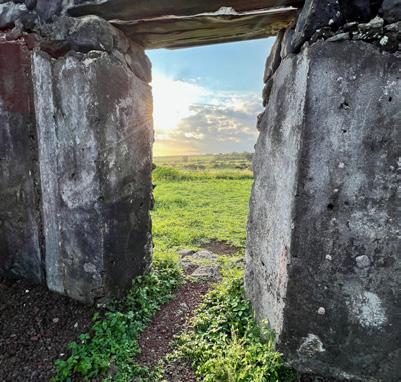


Mahalo to our community organizations and churches for providing important information about your programs, grassroots initiatives, and services. We are inspired by your dedicated service to East Maui’s kūpuna, ‘ohana, ‘āina, kai, and communities. Mahalo to Coucilmember Shane Sinenci for timely and relevant updates, we appreciate your ongoing communications with our residents.

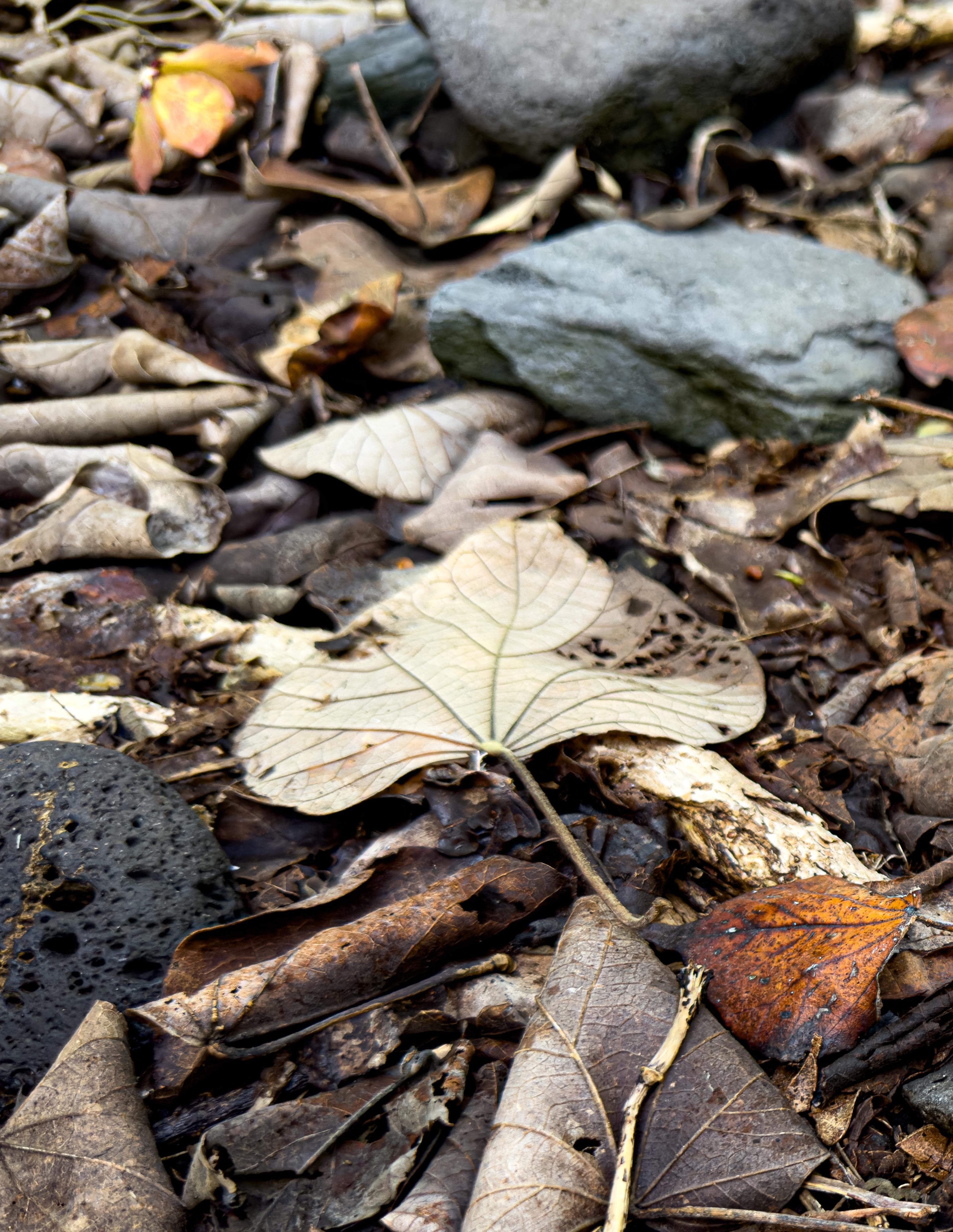
Thank you to the ‘ohana who kindly shared loving remembrances of those we have lost this past year and for allowing us to honor your loved ones in our pages. Our hearts go out to you.

For the beautiful short articles that perfectly rounded out each issue, mahalo to Teresa Waters, Lyons Cabacungan, and Sheila Roback; and to Aunty Rose Soon for sharing her inspiring life story with us in our Kūpuna Highlight.
Mahalo to our photographers. Your beautiful photos elevated our newsletter and greatly enhanced our readers enjoyment of Pō‘ai Pili. And, finally, mahalo to the KCAI board for all the updates and articles, and for providing ongoing support for this newsletter—we’ve come a long way since this idea was born at our community meeting in October 2021.
To our readers, we are so thankful for your continual support, and we hope that you have enjoyed this community newsletter! Thank you for your kind feedback, positive encouragement, and aloha.
Pō‘ai Pili is like a tree. It started off as a seed, planted in the fertile soil of ideas. It grew into a sprout, small leaves branching out. As the seasons turned, it grew into a sapling—with buds and leaves slowly unfurling. And now, it is a firmly-rooted tree, with fruit-laden branches that have touched many hearts and lives.
So thank you. Thank you for a year of Pō‘ai Pili. Many hands came together to reach this goal, to plant this tree and see it to its fruition.
Mahalo, Kamalama Mick & the Staff of Pō’ai Pili
26 PŌ'AI PILI:
Community Newsletter
Kaupō

27

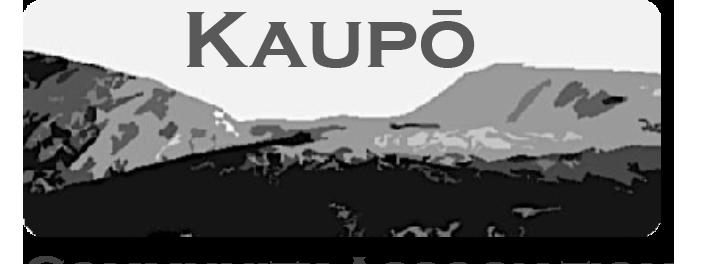
CONTACT INFORMATION FOR THIS PUBLICATION
COMMUNITY ASSOCIATION, INC.
Kamalama Mick poaipili@gmail.com Makalapua Kanuha mekananiaokaupo61@gmail.com Kauwila Hanchett kauwila3@gmail.com














 Mahalo, Kamalama Mick Editor
Mahalo, Kamalama Mick Editor

 Aloha Kaupō Community, Hoʻomaikaʻi!
Aloha Kaupō Community, Hoʻomaikaʻi!



 Editor's Note: In this photo, low lying clouds and columns of rain move across the sea. Rain squalls sweeping across the shoreline can be observed moving from Kīpahulu, soaking the land in intermittent bursts of windswept rain.
8 PŌ'AI PILI: Kaupō Community Newsletter
Editor's Note: In this photo, low lying clouds and columns of rain move across the sea. Rain squalls sweeping across the shoreline can be observed moving from Kīpahulu, soaking the land in intermittent bursts of windswept rain.
8 PŌ'AI PILI: Kaupō Community Newsletter

















 By Kau'i Kanakaole
By Kau'i Kanakaole




































